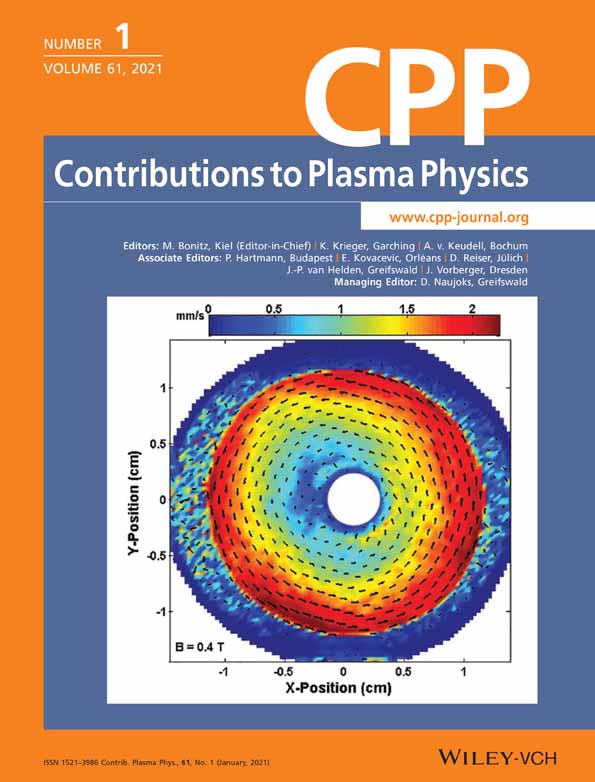Rotational properties of annulus dusty plasma in a strong magnetic field
Funding information: Deutsche Forschungsgemeinschaft
Abstract
The collective dynamics of an annulus dusty plasma formed between a co-centric conducting (non-conducting) disk and ring configuration is studied in a strongly magnetized radiofrequency (rf) discharge. A superconducting electromagnet is used to introduce a homogeneous magnetic field to the dusty plasma medium. In the absence of the magnetic field, the dust grains exhibit thermal motion around their equilibrium position. The dust grains start to rotate in the anticlockwise direction with increasing magnetic field (B > 0.02 T), and the constant value of the angular frequency at various strengths of the magnetic field confirms the rigid body rotation. The angular frequency of dust grains linearly increases up to a threshold magnetic field (B > 0.6 T) and after that its value remains nearly constant in a certain range of magnetic field. Further increase in magnetic field (B > 1 T) lowers the angular frequency. Low value of the angular frequency is expected by reducing the width of the annulus dusty plasma or the input rf power. The azimuthal ion drag force due to the magnetic field is assumed to be the energy source which drives the rotational motion. The resultant radial electric field in the presence of a magnetic field determines the direction of rotation. The variation of floating (plasma) potential across the annular region at given magnetic field explains the rotational properties of the annulus dusty plasma in the presence of a magnetic field.




